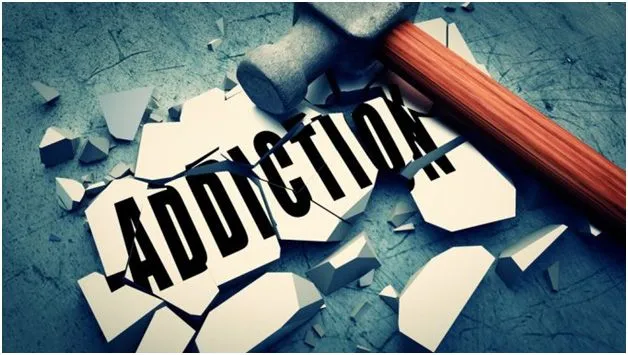DE-ADDICTION PROGRAMME

Copyright infringement is not intended
Context: The Union Ministry of Health and Family Welfare informed the Rajya Sabha about the various programmes running under National ‘Drug De-Addiction Programme (DDAP)’.
About Drug De-Addiction Programme (DDAP)
- The Ministry of Health and Family Welfare is running a National ‘Drug De-Addiction Programme (DDAP)’ with the objectives to provide affordable, easily accessible and evidence-based treatment for all substance use disorders through the government health care facilities.
- Building the capacities of health care staff in recognition and management of substance use disorders.
- The Ministry has released the “Standard Treatment Guidelines for the Management of Substance Use Disorders and Behavioural Addictions”.
- The Union Ministry of Social Justice and Empowerment (MoSJE) implementing National Action Plan for Drug Demand Reduction (NAPDDR), which is an umbrella scheme under which financial assistance is provided to;
- State Governments/Union Territory (UT) Administrations for Preventive Education and Awareness Generation.
- Capacity Building, Skill development, vocational training and livelihood support of ex-drug addicts, Programmes for Drug Demand Reduction by States/UT etc.
- ‘Non-Government-Organisations/Voluntary Organisations for running and maintenance of Integrated Rehabilitation Centres for Addicts (IRCAs).
- Community based peer Led Intervention (CPLI) for early Drug Use Prevention among Adolescents and Outreach and Drop In Centres (ODIC) and Addiction treatment facilities (ATFs) in Government Hospitals’.
- It also provides financial support for setting up of District De-addiction Centre (DDAC) in various districts all across India.
- The Ministry of Social Justice and Empowerment Implementing ‘Nasha Mukt Bharat Abhiyan ‘(NMBA) in 272 identified vulnerable districts.
- The Ministry of Social Justice and Empowerment is implementing a project titled Establishing and Implementing Capacity Building Mechanism for Addiction Treatment Facilities in India. Under the project, 5-day training workshops are organised for staff of various Government run/supported/funded facilities established for treatment of drug addiction in the Country.
About Drug Addiction in India
- Millions of Indians are dependent on alcohol, cannabis, and opiates, and drug misuse is a pervasive phenomenon in Indian society.
- According to a Government report, India had 2.3 crore drug addicted users.
- From traditional plant-based drugs such as cannabis, cocaine, and heroin to synthetic drugs such as tramadol, consumption of narcotic substances in India has increased manifold in recent years.
- In terms of users, India's illicit drug markets are mostly dominated by Alcohol, cannabis and opioids.
- Cannabis in the form of bhang is legal in India. Its other forms; ganja (marijuana) and charas (hashish) are illegal.
- Uttar Pradesh has the highest number of cannabis users, followed by Punjab.
- Roughly one-third of drug addiction cases are from Uttar Pradesh, Punjab, Haryana, Maharashtra and Delhi.
- However, in terms of population percentage, the north-eastern states top the list.
- Many pharma products are also used for their sedation effects.
- Some drug users take the inhalation route for psychoactive drugs.
- Nearly 18 lakh adults and 4.6 lakh children fall in the badly addicted category, according to the AIIMS report.
Effect of Drug Addiction
- Drugs are chemical compounds that affect the mind and body. The exact effects vary among individuals and also depend on the drug, dosage, and delivery method.
- Consuming one or two servings of alcohol can lead to mild intoxication. A person may feel relaxed, uninhibited, or sleepy.
- Nicotine from cigarettes and other tobacco products raises blood pressure and increases alertness.
- Using a prescription opioid as a doctor has instructed helps relieve moderate-to-severe pain, but opioids can also cause drowsiness, shallow breathing, and constipation.
- Drug addiction negatively affects Physical, mental, emotional, and physiological conditions of a person.
- Drug addiction not only affects the substance abuser but also impacts families. The family members have to face social consequences, mental stress and are put under a huge financial burden.
- In cases where the addict is the sole breadwinner in the family and the money for the household gets spent on drugs, the family members struggle to sustain themselves.
Way Forward
- The focus must be on preventive education, awareness generation, identification, counselling, treatment and rehabilitation of individuals with substance dependence, training and capacity building of the service providers through collaborative efforts of the Central and State Governments and Non-Governmental Organisations.
- Create awareness and educate people about the ill-effects of substance dependence on the individual, family, workplace and the society at large and reduce stigmatization of and discrimination against, groups and individuals dependent on substances in order to integrate them back into the society.
- Develop human resources and build capacity to Provide for a whole range of community based services for them.
https://www.pib.gov.in/PressReleasePage.aspx?PRID=1808223



1.png)
